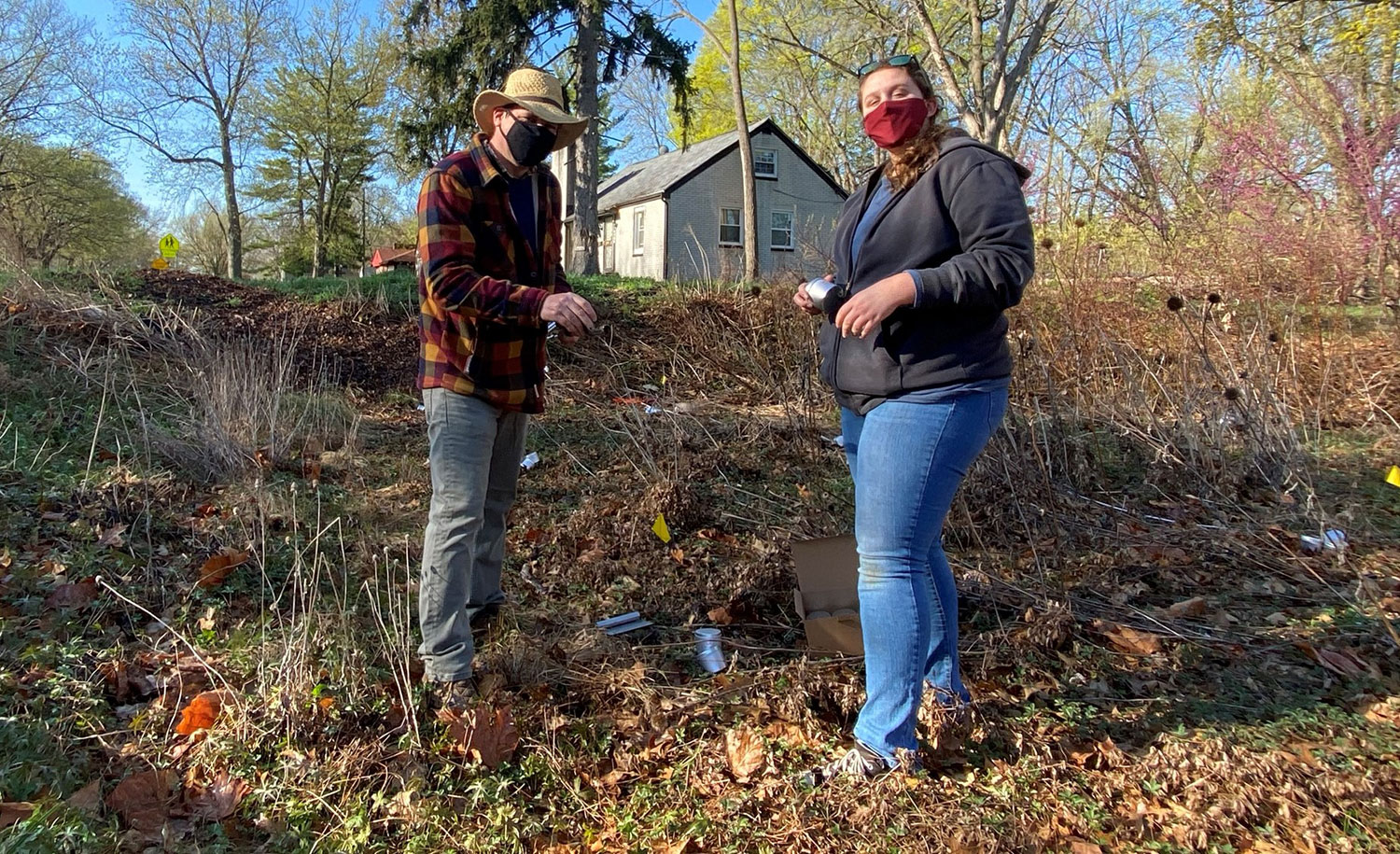Earth Day, every day: Wayne State researchers analyzing green infrastructure sites in ongoing microplastics mitigation project
In the Department of Civil and Environmental Engineering at Wayne State University, Earth Day and its larger meaning is central to the daily work of students and faculty. As the world demonstrates its support for environmental protection, one Wayne State research team is focusing on a material that composes more than half of the waste released on the planet in a given year: plastic.
About 10,000 metric tons of plastic enter the Great Lakes every year, and another 8 million goes into the ocean. While much attention is paid to pollutants such as plastic bags and consumer product packaging, there are also much smaller culprits creating significant issues for ecological and human health.

Microplastics - which measure less than five millimeters in size - enter water and food supplies as well as marine environments, often undetected. Some microplastics are manufactured microbeads in such products as toothpaste and laundry detergent; others are the result of degradation of larger materials over a long period of time. They act as toxic sponges, absorbing large amounts of persistent organic pollutants, which can lead to serious illnesses, and interact with microbiota such as bacteria and fungi, which play key roles in the ecosystem.
The Smart Management of Microplastic Pollution research program at Wayne State, led by Associate Professor Yongli Zhang, is a three-year initiative aimed at reducing microplastic pollution in communities surrounding the Great Lakes. In its latest research phase, the team is working on identifying microplastic pollution levels in stormwater runoff and studying green infrastructure (GI) sites as a mitigation tool to remove microplastics before they reach potable water supplies.

"This research involves sampling soils, groundwater and stormwater runoff to understand the fate of these microplastics," said Zhang. "We hypothesize that green infrastructure - like rain gardens that soak up water - may be sinks for microplastics. They may also filter out microplastics so that they do not get into the sewer system and, ultimately, our streams, rivers and the Great Lakes."
Zhang's team will analyze samples from multiple GI sites to determine what types of plastic are most prevalent, and how the microplastics are captured and accumulate within the GI site.
"This data will confirm if GI sites such as these are viable mitigation tools to filter microplastics from stormwater," said Zhang.
In 2018, the Great Lakes Protection Fund awarded a $929,000 grant to develop technology that would zero in on microplastic sources and accelerate a targeted outreach and mitigation campaign. In addition to environmental monitoring, researchers develop and employ Internet of Things technology - optical sensors, machine learning and edge computing - to allow for more cost-efficient and timely sourcing of microplastic pollution.
"The issue of plastic pollution - and more specifically microplastic pollution - is beginning to get more attention," said Zhang. "However, this is still a relatively new issue for most people, and a great deal of outreach is still needed to make positive changes to public awareness and engagement."
Visit microplastics.wayne.edu to learn more about the Smart Management of Microplastic Pollution in the Great Lakes initiative.